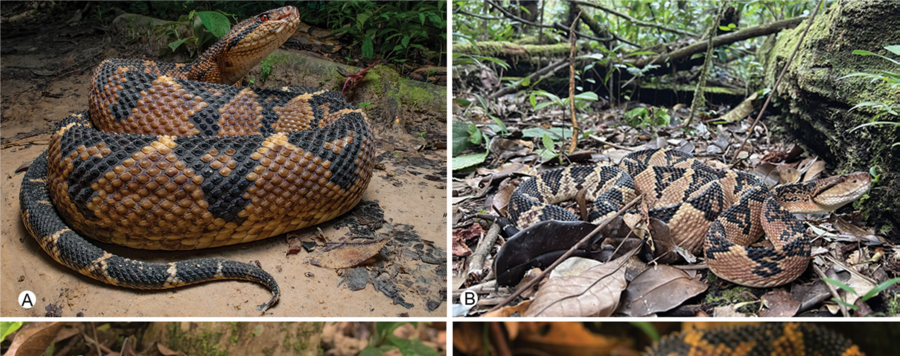
When a name changes everything: taxonomy and conservation of the Atlantic bushmaster (Lachesis Daudin, 1803) (Serpentes: Viperidae: Crotalinae)
The South American bushmaster Lachesis muta is currently considered a valid taxon with no recognized subspecies. However, its wide distribution with discontinuous populations, the restricted sampling of molecular data in previous studies, and the inherent difficulty in obtaining diagnostic data, preclude a detailed evaluation of the taxonomic status of this taxon. In this study, we use high-resolution genomics, as well as venomic, morphological, and ecological data to infer the speciation processes involved in the evolutionary history of L. muta populations. Our data recognize the Amazon populations as L. muta and the Atlantic Forest populations as L. rhombeata. Lachesis rhombeata has lower genetic diversity than L. muta and we recommend a critical evaluation to include this species in the national and international red lists of endangered species. Moreover, we propose classifying the L. rhombeata population from the Baturité massif (Ceará state) as an evolutionarily significant unit (ESU) for conservation and we also found genetic substructure within L. muta populations. We expect our results will contribute to the taxonomic stability of the Neotropical fauna and highlight the urgency of protecting Atlantic Forest populations of Lachesis species and, consequently, the landscape that this species and related biota inhabit.






